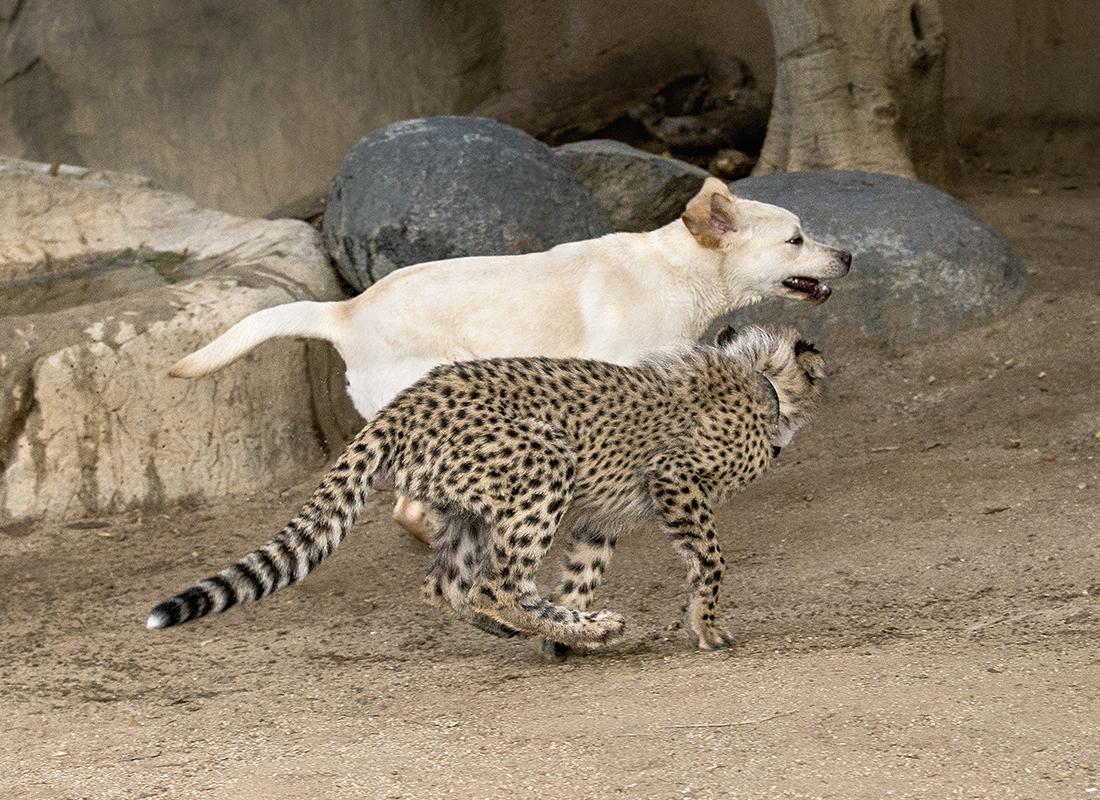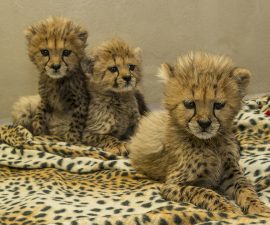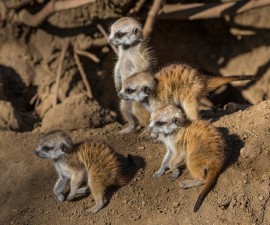BY Eston Ellis
Photography by Ken Bohn
February 16 marks the beginning of Lunar New Year celebrations—and this year has been designated as the Year of the Dog. However, every year is a “year of the dog” at the San Diego Zoo and Safari Park, where domestic dog ambassadors play a very important role.
At the Zoo, domestic dogs serve as companions for five cheetahs and two wolves. Dogs can be seen with their cheetah buddies in the Animals in Action experience and at the Wild About Animals show at Wegeforth Bowl, and frequently with wolf buddies at the Wild About Animals show. At the Safari Park, dogs are companions for six cheetahs, and one can be seen with its cheetah pal each day at Cheetah Run.
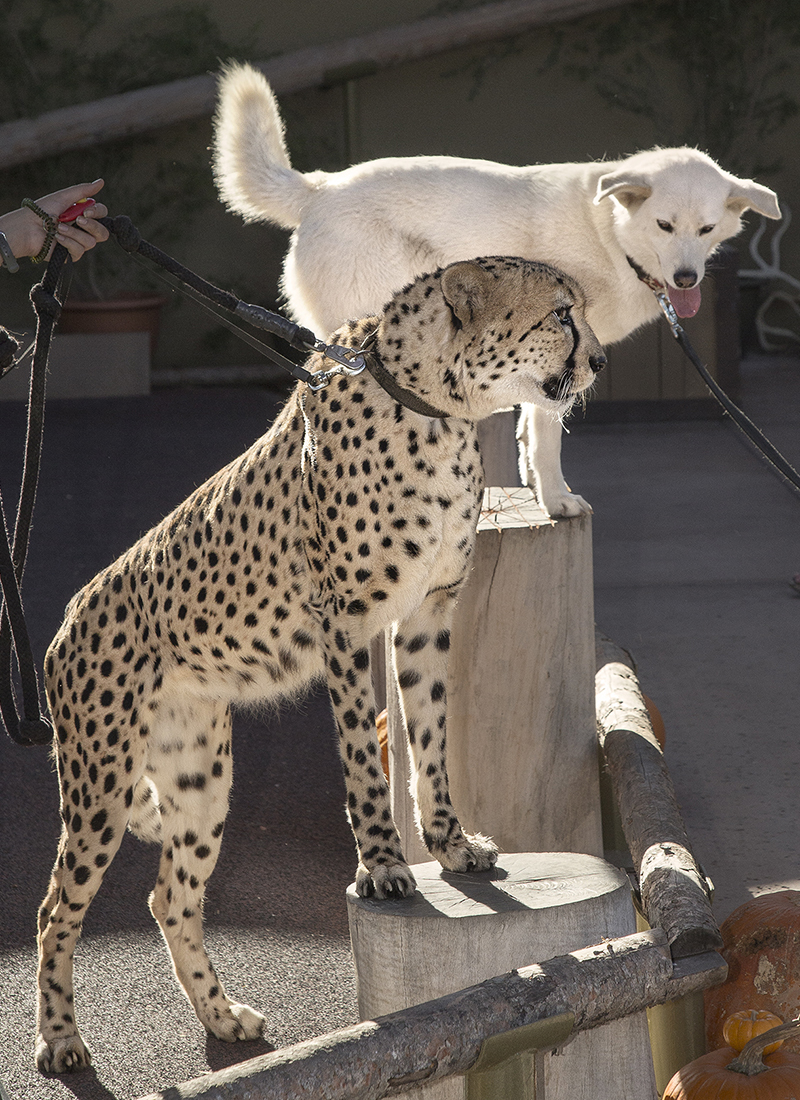
BEST BUDDIES
Bakari (left) and Miley, a closely bonded dog and cheetah pair, make frequent appearances at the Zoo’s Animals in Action experience.
Our dogs include both purebreds and shelter rescue mixed-breed “mutts,” yellow Labrador retrievers, Rhodesian ridgebacks, and Anatolian shepherds—a large breed used in Africa to protect livestock and deter cheetah attacks by its mere presence. While these dogs may be different in appearance, all of them have one thing in common: a winning, eager, “can-do” personality.
“When we look for a dog that will be an animal ambassador, we aren’t looking for the dog cowering in the corner, or the dog growling at the fence,” said Susie Ekard, animal training manager at the Safari Park. “The dog that is wagging its tail and is so happy to see us, that’s the one we’re looking for. That dog has ‘let’s take on the world’ confidence and curiosity about what’s around the next corner.”
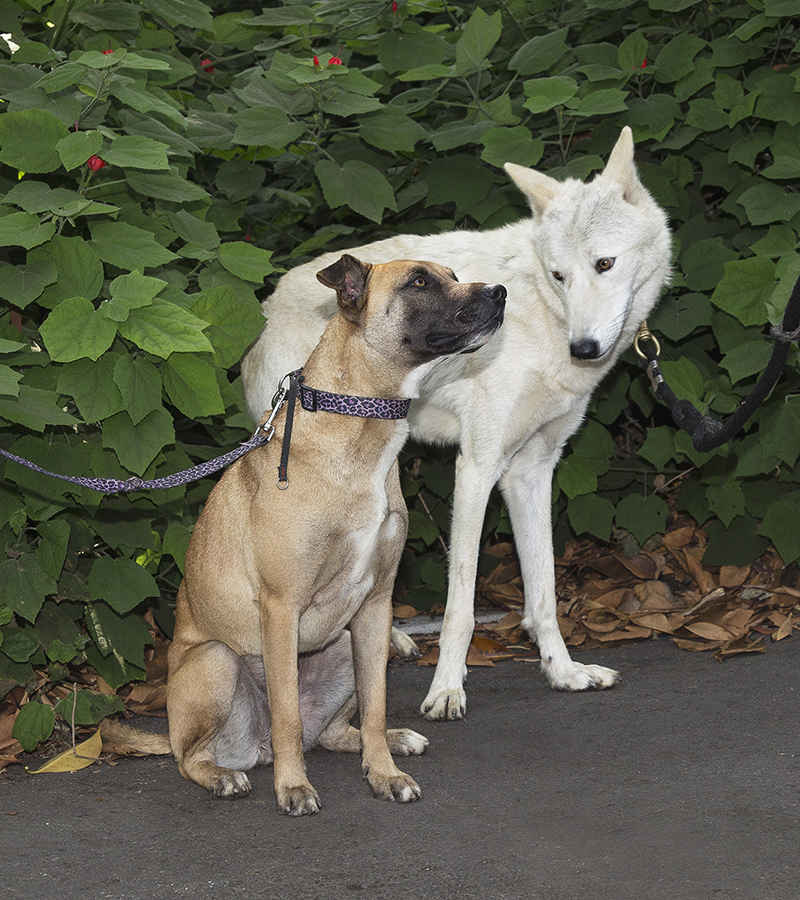
LEADER OF THE PACK
Kona (left) plays a dominant “big sister” role in her relationship with wolves Koda (right) and Shadow (not pictured).
Buddies to Cheetahs and Wolves
Susie described the dogs that work with cheetahs as “happy-go-lucky,” yet extraordinarily focused. They are not concerned about people walking by or the big yellow Balloon Safari rising over the ridge. Unlike those mellow dogs, “cheetahs are wild animals that survive by noticing every little thing that is going on around them in their environment,” Susie explained. “They will get distracted by a moving carousel, a buzzing sound in the sky—could that plane be a predator?—or even a trash can. And judging from their reactions, trash cans must be ‘cheetah-eating monsters.’”
That is why a cheetah that is not raised properly by its mother is often paired with a companion dog, said Annette Russell, lead for Wildlife Discoveries at the Park. “The cheetah looks at the dog to see ‘what does my four-legged friend think about all this?’ And the cheetah is OK with the situation if the dog is OK with it. Having the cheetah with the dog, in close proximity, makes training easier in every respect.”
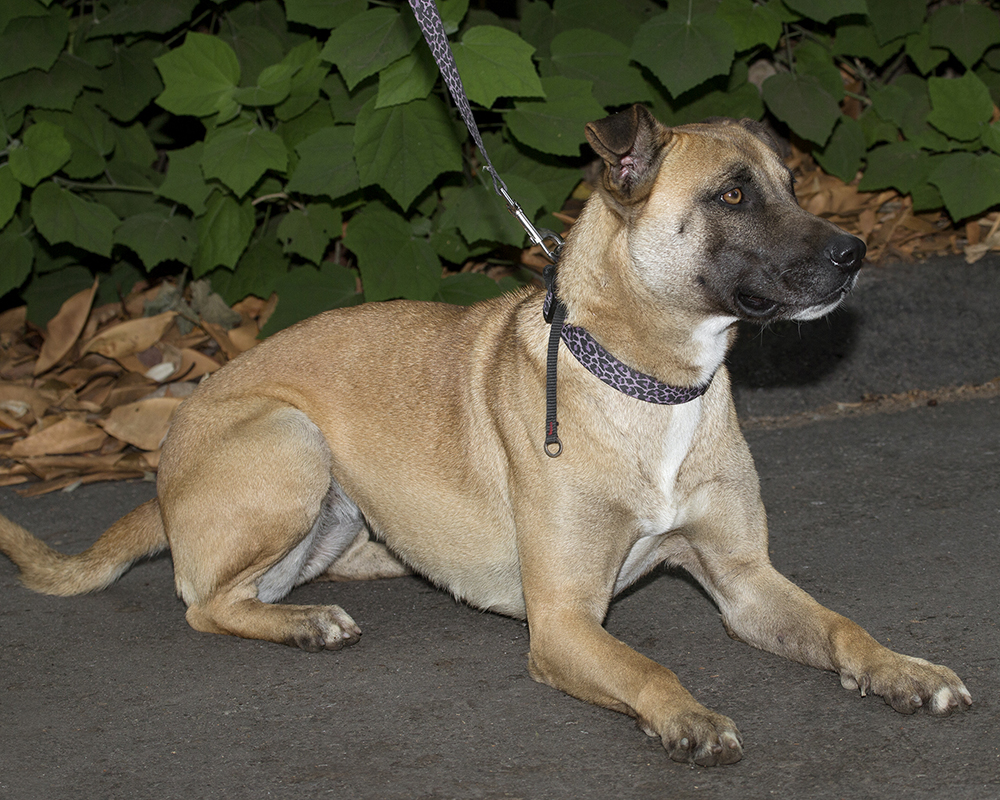
KONA RULES
Kona, a high-energy Belgian Malinois mix, radiates confidence and maintains order in her “pack” of two animal ambassador wolves at the Zoo, Koda and Shadow.
“With dogs and cats, we foster a relationship,” said Kristi Lee Dovich, animal training manager, Animal Connections, at the Zoo. “We want to bring about a symbiotic balance where nobody is in charge. We don’t want a dog to be dominant over a cheetah—but when a dog is dominant in a relationship with a wolf, that’s a perfect arrangement.”
Wolves are pack animals that are already geared to be social and look to a pack leader for guidance, but cheetahs are not. When a dog serves as a wolf companion, “The dog comes in and sets the tone, and the wolf decides ‘that’s a good idea—I’ll follow you,’” Kristi said.
At the Zoo, rescue dog Kona is a companion to two wolves—Shadow and Koda. Kona’s effect on the wolves is a calming one, emphasizing their place in the pack and preventing obvious struggles between the two as they continually compete for dominance over each other, as young wolves naturally do. Kona asserts her dominance in many subtle ways, such as taking a ball and playing with it, seemingly saying “I have the ball, you don’t.” She also may run around the enclosure and move between the two wolves, if they are jockeying for position to be closest to the trainer. “What Kona does is very calculated,” Kristi said. “Each wolf is always trying to be king of the mountain. But here, Kona is in charge: she will correct the dynamic.”
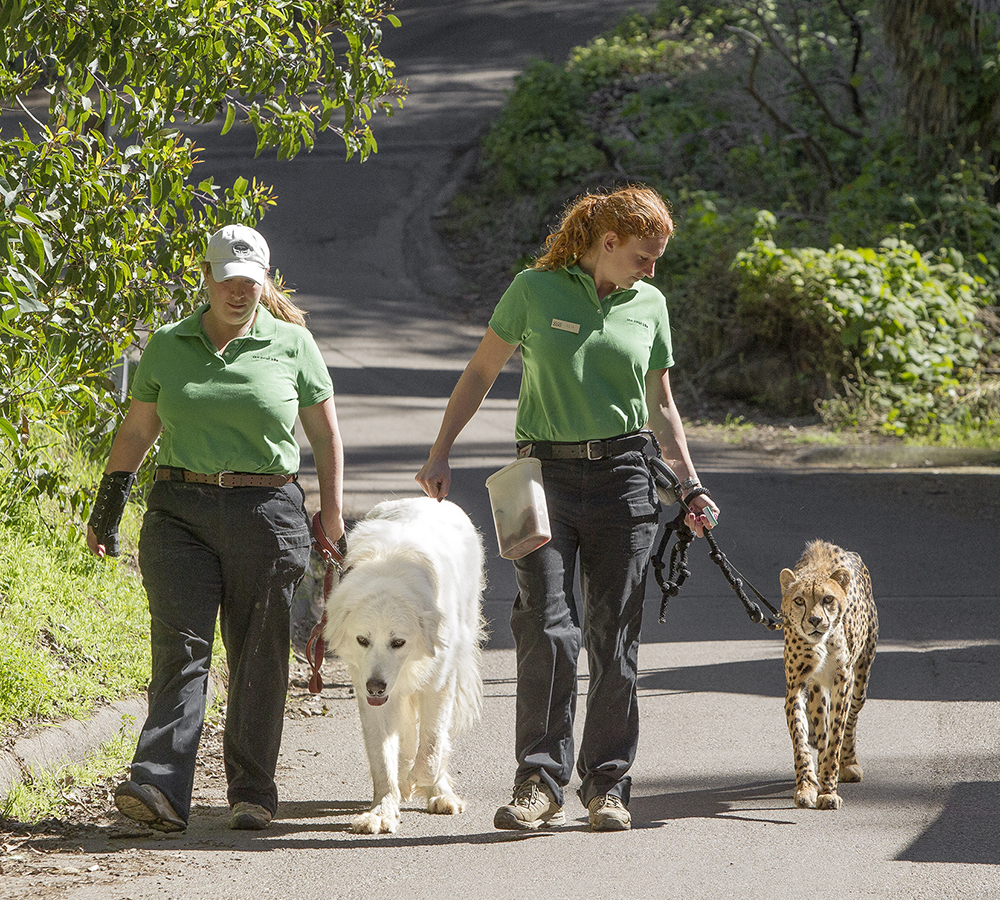
WALK THIS WAY
Duke, an Anatolian shepherd, and his companion cheetah Taraji spend most of their days together at the Zoo and enjoy regular walks with trainers.
A Perfect Pair?
The idea that a dog and a cheetah could live together and be companions originated at the San Diego Zoo in the early 1980s, with a cheetah named Arusha and a golden retriever named Anna. The two met when the hand-raised Arusha was just three months old, and they soon became bonded like siblings. Anna’s constant presence gave Arusha the confidence to interact with guests as an animal ambassador, helping Zoo trainers share the story of Arusha’s threatened species and convey the importance of ongoing conservation efforts to help cheetahs survive.
Today at the Safari Park, each dog spends most of its time with its cheetah companion, Susie said. “We separate them at feeding time, since the dogs would much rather have their buddy’s yummy raw meat than their own meals. Dogs also need an outlet for exercise and enjoy it when they go to what we call the ‘dog park’ for exercise with all the other dogs. But mostly, they are with their cheetahs 24/7.”
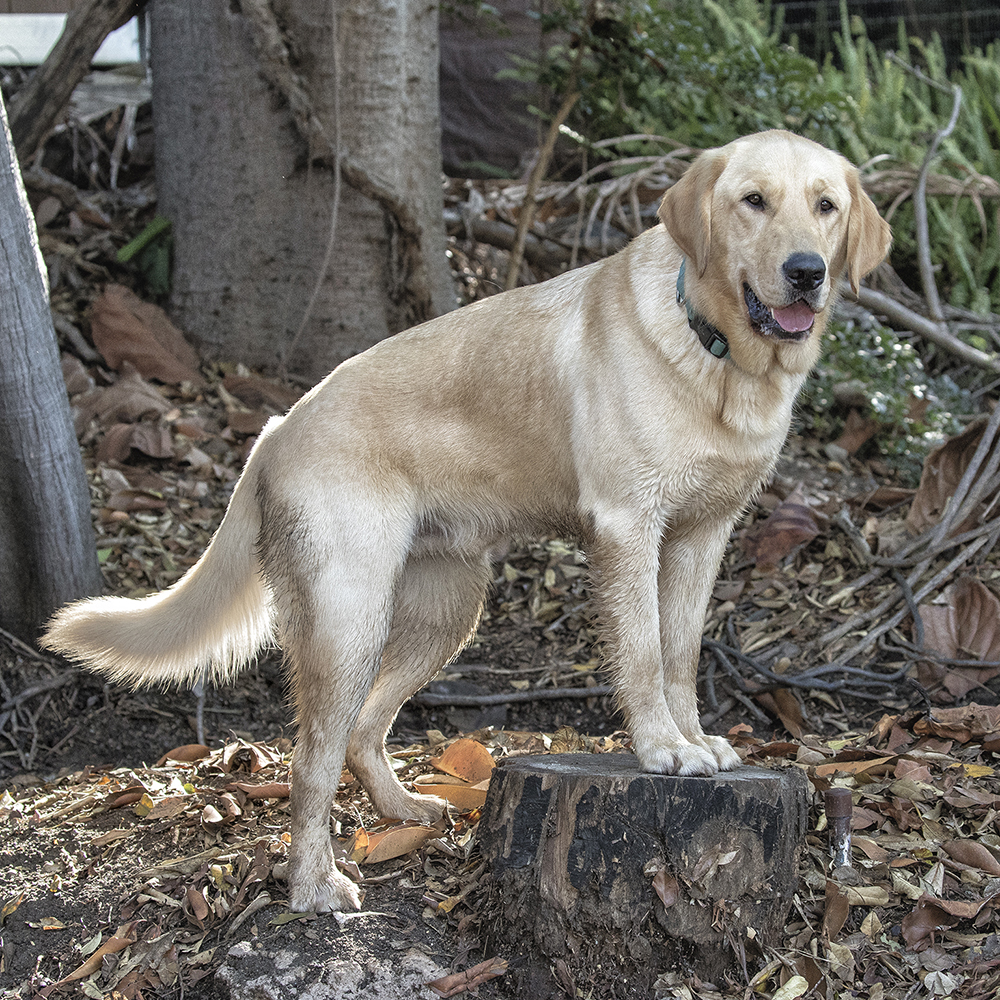
THIS IS ELVIS
Described as “goofy, lovable, and silly” by trainers, energetic Elvis—a companion to cheetah Ilangha at the Zoo—is also very talented: he can quickly find and retrieve any object sprayed with lemon-lavender scent.
Cheetahs and dogs are usually paired at three to four months of age. After a 30-day quarantine period for the dog (usually with a sibling for company) and vaccinations for the cheetah, they get to meet for the first time.
There are separate training sessions for dogs and their companions—then, trainers put them together. “We definitely work with them on manners, etiquette, and leash training; but part of each dog’s training is reading their cheetah,” Susie said. “They need to be attuned to their cheetah, since that’s kind of their thing; and while they are connected with the person, they also are connected to their cheetah buddy.”
The dog can be instrumental in helping their buddy feel comfortable in new places and new situations, including health maintenance activities such as voluntary blood draws. The dog participates in training sessions and goes on walks with its cheetah, building confidence. When the cheetah gets older and more mature, there is a lot more they can do with their companion dog, such as going to a television studio or meeting people in other new surroundings, Annette said.
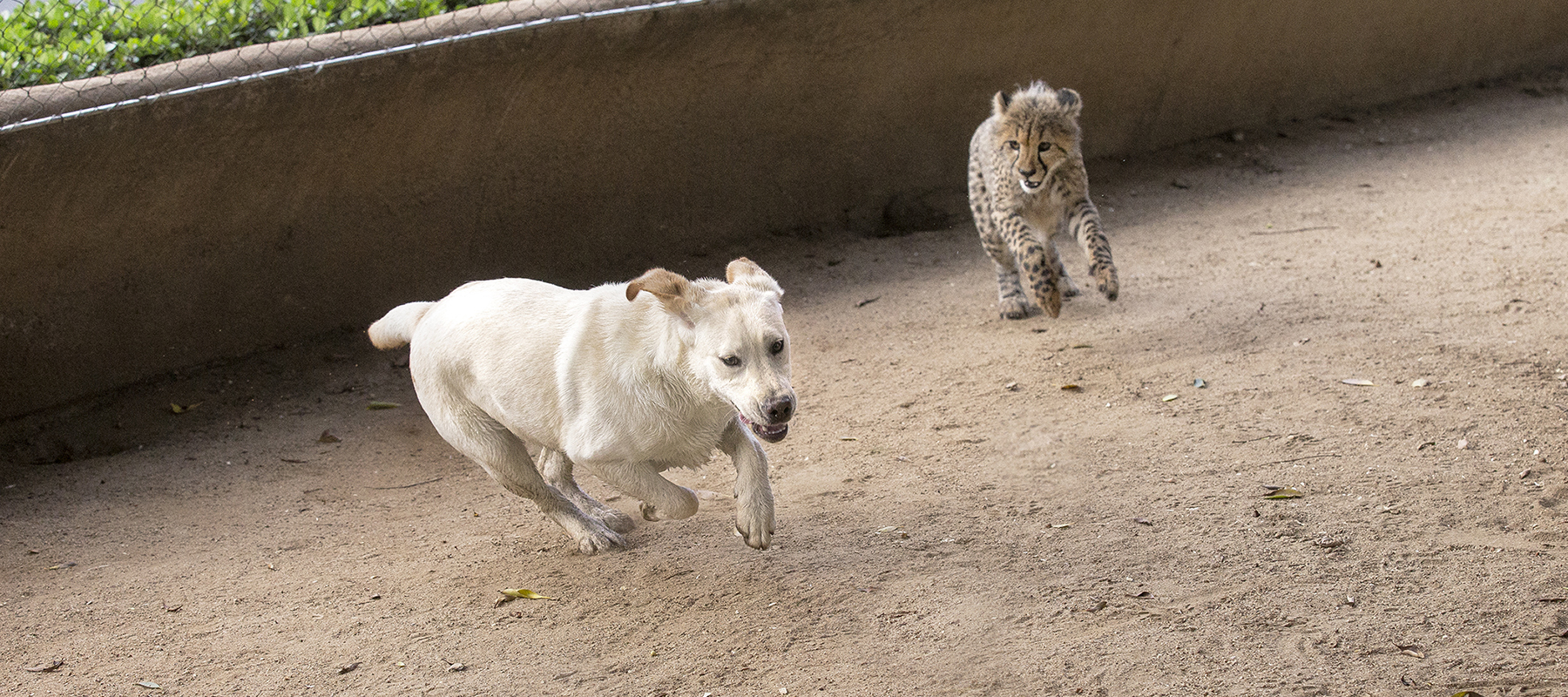
Evolving Relationships
While in the past, all cheetah/dog relationships were based on a tight bond between two individuals, that is changing. Now, some cheetahs are working with more than one dog, and not all animal ambassador cheetahs are living with dogs. “All relationships are different, based on the personalities of the animals involved,” Kristi said. “We’re trying to build on each relationship, so that the cheetah benefits from the dogs’ presence but also has the ability to be independent—with a viewpoint of “I’m cool with my dog, but I’m cool without my dog, too.”
For example, Roketi, a cheetah cub that is currently training to be an animal ambassador at the Zoo’s Animals in Action experience, is very independent and outgoing. She was recently introduced to dogs at the Zoo, and she will potentially have four dogs to play with: Duke, Miley, Honey, and Elvis. She may not live with any one of them, but she will have daily playtime and they will be available to her in new situations, if needed. “She’s learning that all dogs are cool,” Kristi said.
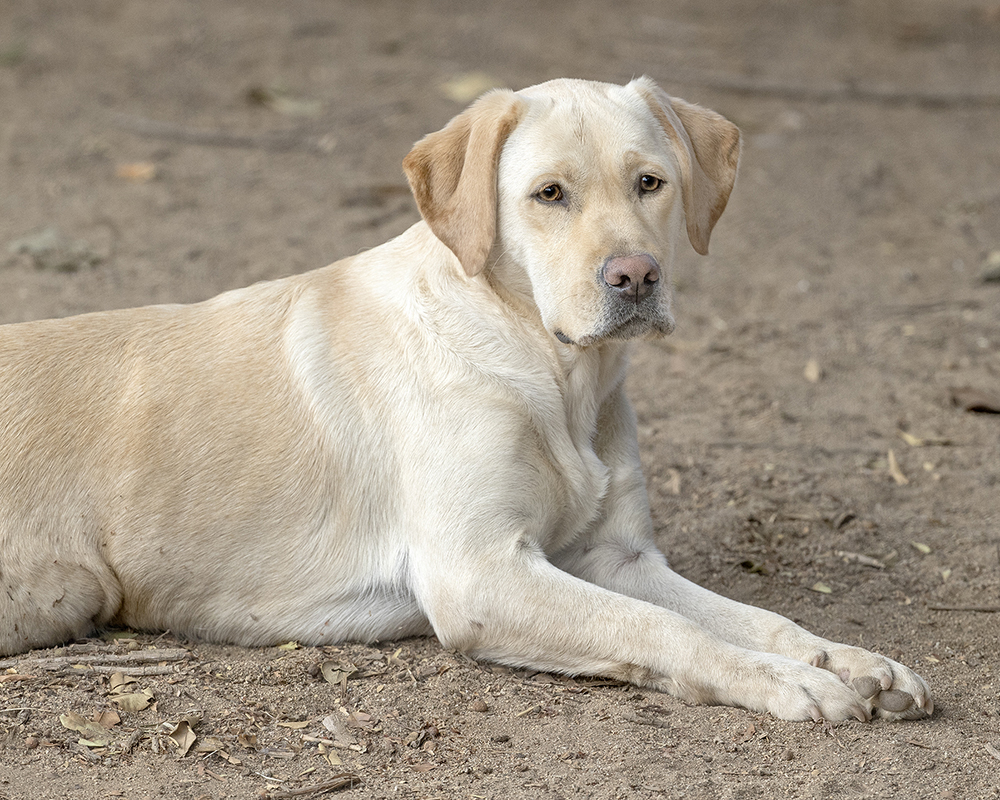
AYANA’S HONEY
Honey, a yellow Labrador retriever, is a companion to cheetah Ayana at the Zoo. The two enjoy high-speed chases at playtime, but Ayana handily wins every race.
All cheetah/dog relationships evolve, Annette explained. As they get older, some cheetahs decide they don’t want to live with their dogs anymore. “Cheetahs are sprinters when it comes to play, but unlike dogs they tire quickly—then, they’re over it,” she said. Cheetahs that live with dogs have a high shelf in their living area so they can get away and be by themselves, if they get tired of playing.
While the domestic dog animal ambassadors at the Zoo and the Safari Park have an important role to play in the lives of their cheetah and wolf companions, they play an equally important part in conveying San Diego Zoo Global’s conservation message to guests, and getting people involved in making a difference for the future of these species. “These charismatic ambassadors introduce people to wildlife and ‘bring home’ the importance of conservation,” Kristi said.
“People react when they see them,” Susie added. “In fact, we have people who come here just to see our dogs and cheetahs. And people always listen to us talk about conservation when we have an animal with us.”

AT THE SAFARI PARK
Meet (from left) Willow, Hopper, Yeti, Raina, and Little Rae.
EVERY DOG HAS A TALE
Animal ambassador dogs at the Zoo and Safari Park come from a variety of backgrounds, and each has a unique story of its own. There are currently five dogs serving as animal ambassadors at the Safari Park, and another five at the Zoo.
WILLOW is a three-year-old female yellow Labrador retriever that is paired with cheetah Bahati. “She is a happy-go-lucky lab, and she loves the water,” Annette said. Because of her affection for water, her cheetah has learned to be OK with water as well.
HOPPER came to the Park as a rescue dog. This nine-year-old is paired with cheetah Amara, and also works with Kiburi. “Hopper really earned his name, and he came with it before we got him,” Annette said. “He’s always ready for a walk, or ready for anything. He’s bounding out the door with all four feet in the air, eager to go.”
YETI, an eight-year-old Anatolian shepherd, is a big, gentle dog that makes a big impression on guests. “She’s slow and sweet,” Annette said. “She does everything slowly, so getting her to sit is a feat.” She is paired with cheetah Johari.
RAINA, a three-year-old Rhodesian ridgeback, has been a companion to cheetah Ruuxa since both were youngsters. Raina is a survivor, successfully battling what was thought to be an incurable cancer. “She’s our miracle baby,” Annette said. “Raina changed a lot after what she went through, and she has mellowed out and is more mature.”
LITTLE RAE, a one-year-old Rhodesian ridgeback, has joined Raina and Ruuxa as a second cheetah companion. “I’d call her a wild banshee,” Annette said, with a laugh. “She may not look like a puppy, but she’s still just a big kid—and she’s good at hugs.”

AT THE ZOO
Meet (from left) Kona, Duke, Elvis, Honey, and Miley.
KONA, an energetic Belgian Malinois mix, came to the Zoo from the San Diego County Department of Animal Services. “She was much too hyper to be on the Humane Society side,” Kristi said. When Kona first came to the Zoo, she began performing in shows at Wegeforth Bowl, jumping water hurdles. Kona’s energy comes in handy in her current role as a companion to two animal ambassador wolves—eight-year-old Koda and three-and-a-half-year-old Shadow. These two young wolves are continually competing with each other for dominance, but Kona is unquestionably their respected pack leader. “Kona is the most intelligent dog I’ve ever worked with,” Kristi said. “She is driven, and she acts like a big sister with the wolves. When she goes in the enclosure with Shadow and Koda, everybody stands at attention. She goes in and shows them ‘here’s where you’re going, and here’s where you’re going: you’re not the boss, and you’re not the boss—I’m the boss.’”
DUKE, an eight-year-old Anatolian shepherd, has the personality of a gentle giant, Kristi said, but he can also be silly and playful. Duke is a companion to cheetah Taraji—and Duke’s sister Yeti (at the Park) is a companion to Taraji’s sister, Johari. Duke is a cancer survivor, and he often goes off grounds to participate in Zoo Express, a therapy outreach program that brings animal ambassadors to health care facilities, community centers and retirement homes. The program is designed to build connections between people and animals, and to help distract hospital patients from their pain. Duke has a plate in his left front leg and an orthotic on his left rear leg. “When kids facing cancer treatment see Duke, they identify with him,” Kristi said.
ELVIS, one-and-a-half years old, is a companion to cheetah Ilangha. He spends most of his time with his cheetah, but they can be apart, too. “Right now, Elvis’ job is being an exercise buddy,” Kristi said. He’s also good at detecting specific scents, such as lemon-lavender. “If you put that scent on a coconut and hide it, Elvis can find that coconut anywhere in this (Wegeforth Bowl) stadium. He is goofy, lovable, and silly—and he doesn’t have any awareness of his body—he just flops all over you.” The irrepressible Elvis came to the Zoo on “career reassignment” from Guide Dogs of America, Kristi said. “I can’t imagine him guiding someone across the street.”
HONEY is a playful three-year-old yellow Labrador retriever. She is a companion to cheetah Ayana. “Ayana and Honey are cool together and cool apart,” Kristi said. “They will chase each other, and it looks like they’re going 100 miles an hour—then Ayana gets ahead, and jumps on a rock, as if to say ‘we’ll try it again later.’” Honey is also on “career reassignment,” Kristi added. Counter to her extremely playful nature, she was formerly in training to become a guide dog.
MILEY, a 10-year-old husky mix that came to the Zoo from the Humane Society of San Diego, is paired with cheetah Bakari. “She and her cheetah were paired the latest in life of any we’ve had, at about one year old,” Kristi said. “It took a long time for them to become bonded, but they are now the most bonded pair in the Zoo, for sure.” Miley and Bakari make frequent appearances in the Zoo’s Animals in Action experience.
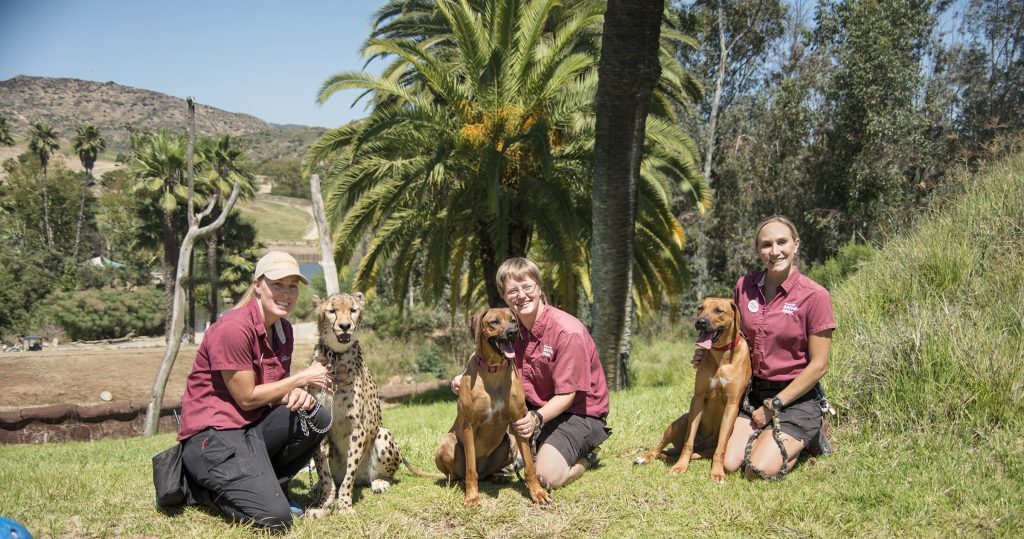
Two Dogs and a Cheetah
For cheetahs and dogs that have been raised together, their bond can be very strong—and in most cases, the cheetah’s attachment to that dog is very specific. The cheetah may chirp when it gets separated from its buddy even for short periods of time, and the cheetah might not even like other dogs. If something happens to its buddy, the relationship usually cannot be replicated with another companion.
Dog Raina and cheetah Ruuxa were raised together at the Safari Park. Their bond was so strong that when Ruuxa needed surgery to correct a congenital leg bone defect, Raina stayed with him during treatment. Ruuxa recovered completely; however, Raina later developed medical problems of her own. “We saw she was developing a limp, and it was discovered that she had a tumor on her shoulder,” Susie explained. It was biopsied, and Raina was diagnosed with hemangiosarcoma, a form of cancer that occurs in the lining of blood vessels, which was believed to be untreatable. She was predicted to live no more than six months.
“Ruuxa is so bonded to Raina, and we worried about him losing his dog, so we introduced Little Rae—an energetic, one-year-old Rhodesian ridgeback—as a second companion,” Susie said. The “trio” brought a new dynamic to the cheetah/dog relationship model. “The Ruuxa-Raina relationship developed very quickly when
they were youngsters, but bringing Little Rae into the relationship took time.”
Fortunately, not only did Ruuxa get a new companion, he was able to keep his original companion, too. After medical treatment and therapy, Raina made a seemingly miraculous recovery. “We just rechecked her, and the three lesions are gone,” Susie said. “Her tumor reduced in size by 75 percent and became operable. The tumor was removed, and she is doing great. She surprised everyone.”

